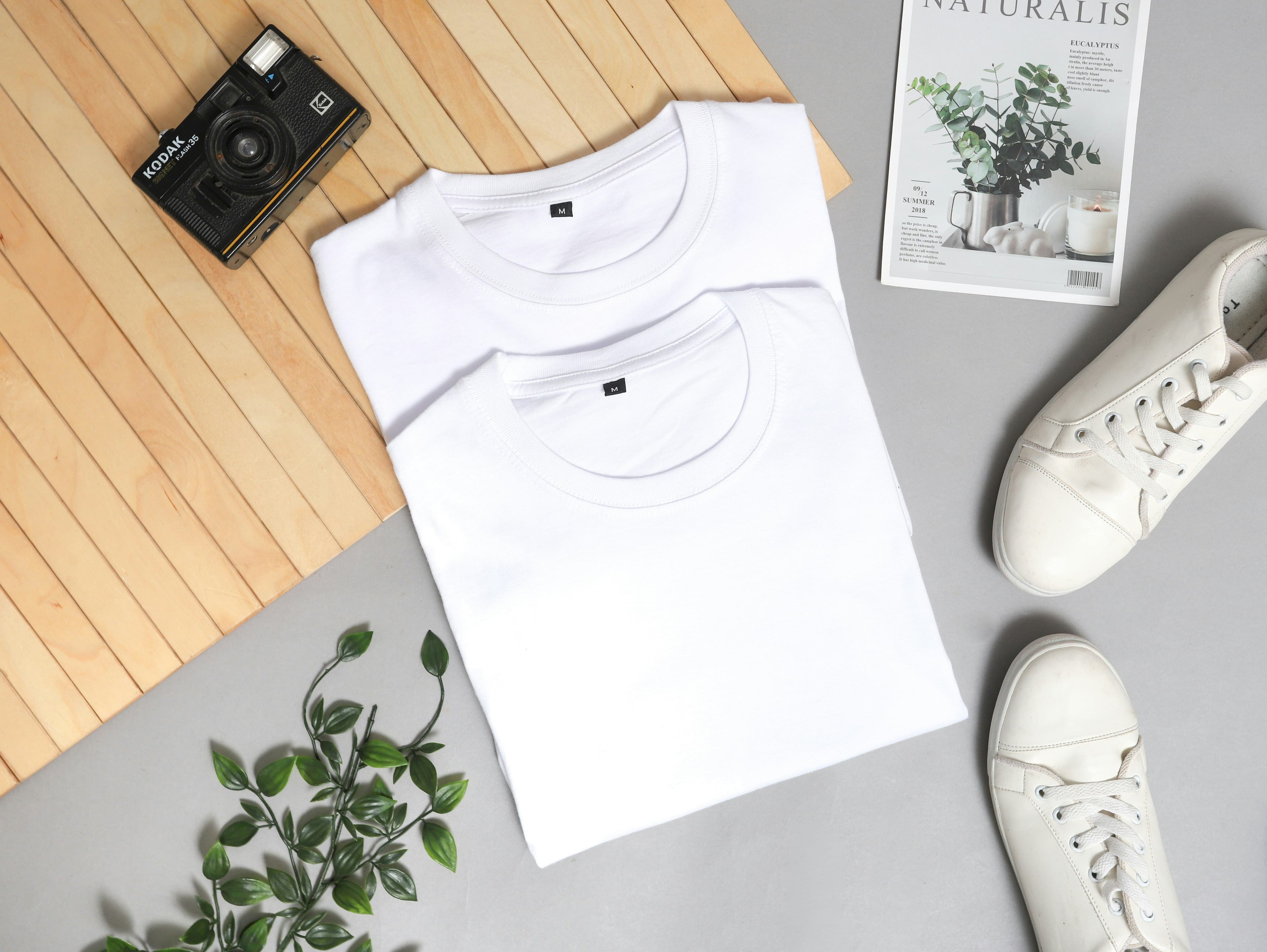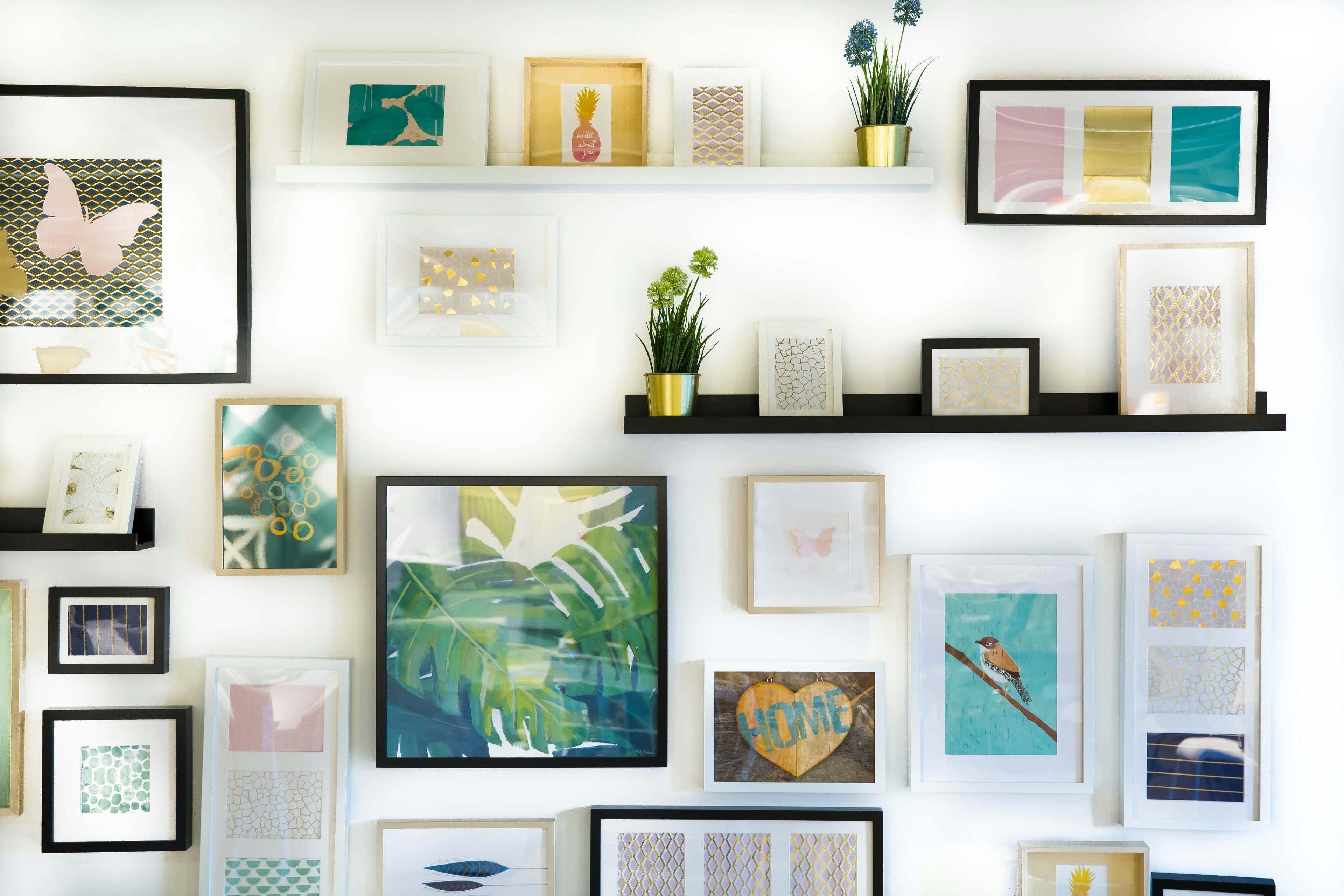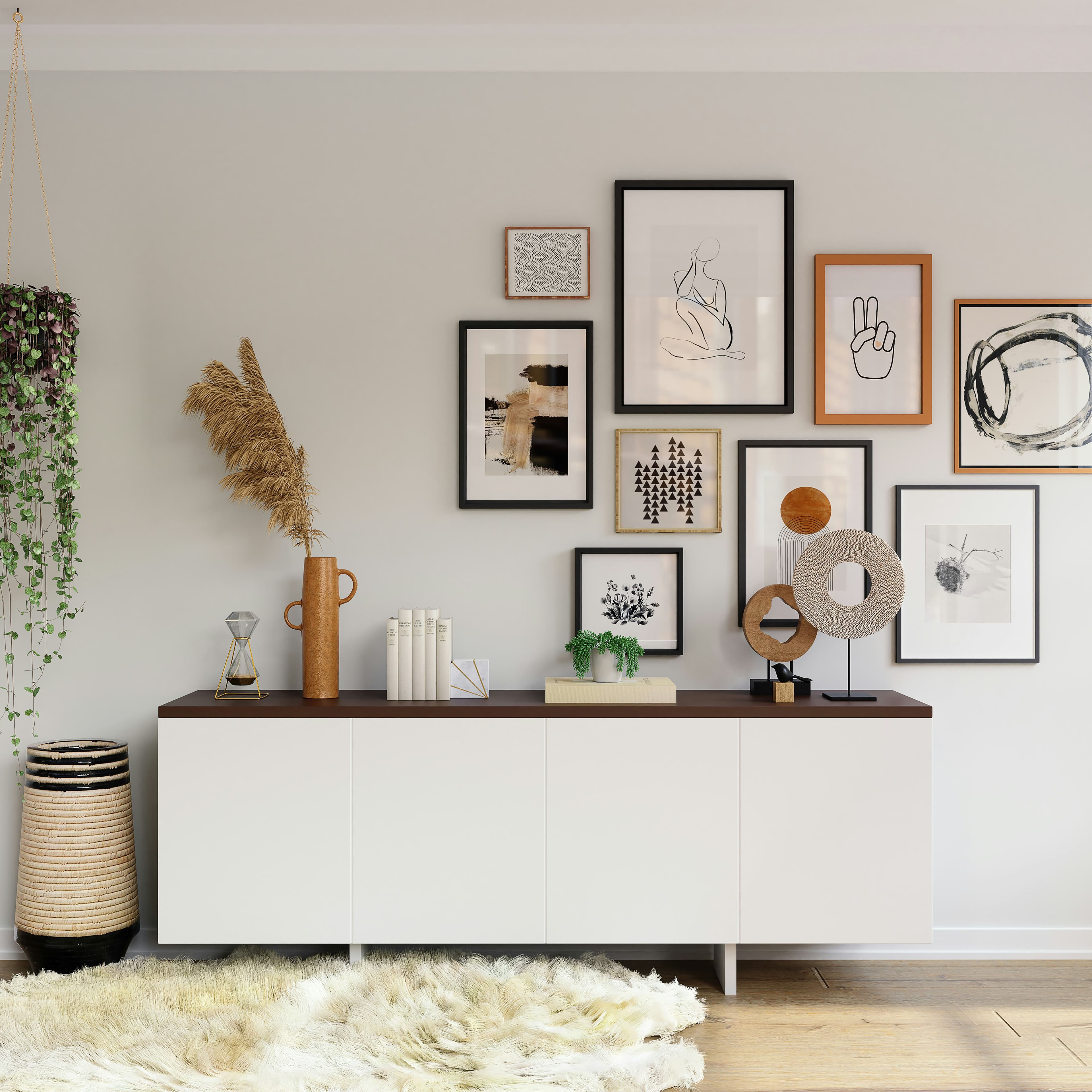Why Creative Block Is Actually a Business Problem
Creative block isn't about inspiration—it's a business system problem. Discover the hidden framework productive creators use to eliminate blocks and build profitable creative businesses.

You're staring at that blank canvas again. Cursor blinking like some cruel metronome on the empty screen. That familiar weight pressing down on your chest as another "creative session" dissolves into mindless Instagram scrolling, hunting for inspiration that feels as elusive as... well, finding a parking spot in downtown LA during rush hour.
God, I hate that feeling.
You've probably blamed everything under the sun by now. Lack of inspiration, your crappy mood, Mercury being in retrograde (again), not enough coffee, too much coffee, that annoying neighbor's dog barking, the wrong Spotify playlist. Maybe you've dropped serious cash on courses promising to "unlock your inner creative genius" or downloaded meditation apps claiming they'll clear your mental fog.
But what if I told you something that might piss you off a little? What if creative block isn't actually about creativity at all?
What if everything you've been told about overcoming this paralysis is not just wrong... but actively making the whole mess worse?
The Inspiration Myth That's Murdering Your Creativity
Let me tell you about two creators I know personally. Both are around the same age and have similar backgrounds; both started their creative journeys in early 2022 when everyone was going crazy about side hustles and "following your passion."
Maya is what most people would call a "natural creative type." She has this impeccable taste that makes you simultaneously admire and hate her. Follows every design trend religiously and has a Pinterest board with over 50,000 pins organized by color and mood like some kind of digital art museum. She talks about "waiting for inspiration to strike" and only works when she "feels the creative energy flowing through her chakras" or whatever.
Maya's creative output in 2024? Twelve finished pieces. Total. Twelve.
Now David... David describes himself as having "the artistic sensibility of a brick wall." His Instagram isn't that aesthetic perfection you see everywhere. He doesn't wait for inspiration like it's some mystical unicorn. Instead, he plops down every Tuesday and Thursday at 7 PM sharp and creates something. Anything. Good, bad, inspired, or uninspired—it doesn't matter.
David's output in 2024? Over 400 finished pieces.
Four. Hundred.
Take a wild guess who's making actual money from their creativity?
Maya is trapped in what I call the "Inspiration Prison"... this toxic belief that creativity requires perfect conditions, divine artistic lightning strikes, and all the stars to align just right. David stumbled onto something way more powerful without even realizing it: systematic creativity.
And honestly? It's kind of infuriating how simple it is.
Why "Waiting for Inspiration" Is Creative Suicide
Here's what nobody wants to admit about inspiration because it ruins the romantic artist mythology we all secretly love...
Inspiration isn't a cause. It's an effect.
Inspiration doesn't create action. Action creates inspiration. It's backwards from everything we've been taught.
Think about it this way (and I bet you've experienced this): Have you ever noticed that your best ideas often crash into your brain while you're already neck-deep in work? You start with some mediocre, half-baked concept, and suddenly... BAM! Three brilliant ideas pop up while you're executing the first crappy one.
That's not coincidence. That's not magic. That's how creativity actually works in the real world.
The blank page is terrifying because it represents infinite possibilities. Your brain literally freezes under the weight of unlimited choices, like a computer trying to process too much data at once. But the moment you slap something (anything) onto that page, you've created constraints.
And constraints? That's where creativity comes alive.
The Weird Paradox of Creative Limitations
Every creative breakthrough in human history happened within brutal, specific limitations. Shakespeare's sonnets had strict rules about meter and rhyme that would make a modern poet weep. Twitter's 280-character limit spawned an entirely new form of human communication. Hitchcock's greatest films were made under the iron fist of 1950s censorship.
Unlimited freedom doesn't spark creativity... it suffocates it.
Maya's problem wasn't lack of inspiration. It was a lack of productive boundaries. She had too many choices, too many possible directions, and no systematic way to navigate through the chaos. Like trying to choose a restaurant when you have every cuisine in the world available... you end up ordering pizza again.

The Science Behind Creative Consistency (This Will Blow Your Mind)
Researchers at Harvard Business School spent five years stalking creative professionals and discovered something that completely destroys the "tortured artist" mythology we've all been fed.
The most consistently creative people weren't more inspired. They weren't more talented or more passionate or more connected to their "artistic souls."
They were more systematic.
More boring, honestly.
They had routines, processes, and frameworks that completely eliminated the need to "feel creative" before creating. They treated creativity like a muscle to be exercised rather than a mood to be waited for.
Dr. Teresa Amabile's research (and this woman knows her stuff) showed that people who maintained consistent creative output had three things in common that separated them from the struggling masses:
1. Scheduled Creative Time
They didn't wait for inspiration like it was some unreliable friend who might show up to dinner. They scheduled creativity like any other important appointment. Same time, same place, same duration. This consistency literally trained their brains to be creative on command.
Sounds mechanical? Maybe. But it works.
2. Clear Starting Prompts
Instead of starting with the paralyzing directive "create something amazing," they used specific, concrete prompts. "Design a logo for a coffee shop that caters to insomniacs." "Write a 500-word story about a lost key that changes someone's entire life." "Create a poster for an imaginary concert featuring bands that broke up in the 90s."
Specificity eliminated paralysis. Boom.
3. Quantity Goals Over Quality Goals
This one honestly blew my mind when I first heard it. They focused on producing a certain number of pieces rather than producing perfect pieces. There's this famous story about a pottery teacher who divided his class into two groups... one graded solely on quality (one perfect pot) and one graded on quantity (50 pounds of pots, regardless of quality).
The quantity group produced significantly higher quality work. Like, it wasn't even close.
Volume creates skill. Skill creates confidence. Confidence creates better work. It's this beautiful, self-reinforcing cycle.

💡 50 Digital Side Hustle Ideas
Get your free guide packed with 50+ profitable digital side hustle ideas you can start today — even if you're a complete beginner!
We respect your privacy. Unsubscribe at any time.
The Creative Block Annihilation Framework
Based on this research and my own obsessive observations of successful creators over the past few years, here's the framework that eliminates creative block permanently (and I mean permanently):
Step 1: Create Your Creative Container
Pick specific times for creative work. Not "when I feel inspired" (because let's be honest, that's basically never) but "Tuesday 7-9 PM" or "Every morning before my first cup of coffee." Your brain craves predictability to perform consistently.
Maya switched from "creating when the universe aligns" to "creating every Wednesday evening for exactly two hours, no exceptions." Her output tripled in the first month. Tripled.
Step 2: Use Constraint-Based Prompts
Never, ever start with a blank slate. Always start with specific limitations that feel almost arbitrary. "Design something using only three colors, and they all have to be variations of blue." "Write something that fits perfectly on a standard postcard." "Create something inspired by the last weird text message you received."
Constraints aren't creativity killers... they're creativity amplifiers on steroids.
Step 3: Embrace the Quantity Mindset
Stop trying to birth your masterpiece every single time you sit down to work. Instead, commit to creating something. Anything. Set quantity goals that feel almost stupidly simple: "I'll write 10 different headlines today" or "I'll sketch 20 logo concepts this week, even if 18 of them suck."
Most of what you create will be mediocre. That's not a bug in the system... it's a feature. You can't edit a blank page, but you can always improve something that exists in the real world.
Step 4: Build Your Idea Capture System
Inspiration rarely strikes during scheduled creative time because life is weird like that. It hits during grocery shopping when you're trying to remember if you need milk, in the shower when your hands are covered in shampoo, or while walking your dog, who's more interested in sniffing everything than your creative breakthroughs.
David uses this ridiculously simple note-taking app where he dumps every random idea that pops into his head. When it's time to create, he doesn't start from zero... he starts from his collection of captured thoughts. Genius, honestly.
Step 5: Focus on Process Over Outcome
Celebrate showing up, not just creating great work. The goal isn't to produce a masterpiece every session (that's impossible anyway)... it's to strengthen your creative muscle through consistent practice like you're training for some weird artistic marathon.
Track your consistency, not just your quality. "I created something five days this week" is infinitely more valuable than "I created one amazing thing this month and then burned out."
The Hidden Truth About Creative Success
Here's where this gets really interesting, and why everything I just told you matters way more than you probably realize right now.
The framework I just described... scheduled consistency, constraint-based creativity, quantity over perfection, systematic idea capture, process focus... these aren't just creativity principles.
They're business principles.
Like, exactly the same principles that power every successful creative business on the planet.
Every profitable creative entrepreneur (whether they realize it or not) operates on these exact fundamentals. The difference between creative hobbyists spinning their wheels and creative entrepreneurs actually making money isn't talent or inspiration or some mystical artistic gift...
It's systematic execution.
Think about it for a second. David's approach of consistent output, specific constraints, and quantity focus? That's not just good creativity advice floating in the ether. That's the foundation of literally every profitable creative business model that exists.
And here's the revelation that changes absolutely everything: What David accidentally discovered about overcoming creative block is the exact same system that powers wildly successful print-on-demand businesses.

The Print-on-Demand Connection (Your Aha Moment)
Wait. Do you see it now?
Everything just clicks into place, doesn't it?
Print-on-demand isn't about waiting for the perfect design idea to strike like lightning. It's about systematic creative production using the exact framework I just spent 1,000 words explaining.
The most successful POD entrepreneurs don't suffer from creative block because they've systematically eliminated every single condition that creates it. They use:
Scheduled Creation Time: They set aside specific, non-negotiable hours each week for design creation, treating it like any other serious business activity rather than some mystical artistic practice.
Constraint-Based Design Prompts: Instead of the paralyzing "create something amazing that will change the world," they use hyper-specific prompts like "funny t-shirt design for dog lovers who drink too much coffee" or "motivational quote specifically for overworked nurses" or "Christmas design for coffee mugs that soccer moms would actually buy."
Quantity-Focused Production: They create multiple variations around trending themes rather than obsessing over perfecting single designs. Twenty simple, decent designs beat one "perfect" design every single time in the real marketplace.
Systematic Idea Capture: They research trending keywords religiously, analyze bestsellers like they're studying for finals, and maintain detailed lists of profitable niches instead of waiting for inspiration to randomly appear.
Process Over Outcome Focus: They measure success by uploads per week, consistent production, and market response rather than personal artistic satisfaction or individual design quality.
Maya's creative block wasn't a creativity problem at all. It was a business system problem. She was trying to run a potentially profitable creative business using hobbyist thinking and wondering why nothing worked.
How to Actually Start a Print-on-Demand Side Hustle (The Real Way)
Now that you understand the real foundation of creative productivity (and it's probably not what you expected), here's how to build a legitimate POD business using these principles:
Create Your POD Production Schedule
Don't wait for inspiration to strike like some unreliable coworker. Schedule specific, sacred times for market research, design creation, and uploading. Treat POD like a real business, not a hobby you mess around with when you're bored. Most successful POD sellers dedicate 2-3 specific time blocks per week to their business with the discipline of someone who actually wants to make money.
Use Market-Driven Constraints
Instead of designing whatever random stuff pops into your head, use actual market research as your creative constraints. "Create 10 designs for the yoga niche using trending keywords that people are actually searching for" is infinitely more productive than "create something cool that expresses my artistic vision."
Research tools like Marmalead, eRank, or even simple Etsy searches give you specific, profitable creative prompts based on real demand from real people spending real money. The same research principles that help you choose a profitable blog niche apply directly to POD success.
Embrace Volume Over Perfection (This Is Crucial)
Your first 100 designs don't need to be masterpieces that belong in the Louvre. They need to exist in the marketplace. Upload consistently, test different niches relentlessly, and let the market tell you what actually works instead of guessing based on your personal preferences.
Set concrete quantity goals: "Upload 5 designs this week, no matter what," instead of "create the perfect design that will make me rich overnight." Whether you're building freelancing systems or creating profitable printables, consistent output beats perfectionist paralysis every time.
Build Your Opportunity Capture System
Successful POD sellers capture trending topics, seasonal opportunities, and profitable niche ideas constantly, like they're collecting rare coins. Create a simple, practical system to track profitable keywords, trending themes, and design opportunities that actually convert.
When you sit down to create, you're not starting from the terrifying blank slate... you're executing from your research pipeline filled with proven opportunities.
Focus on Business Metrics, Not Creative Validation
Track uploads, keyword rankings, and actual sales data instead of how personally attached you feel to individual designs. The market's response matters infinitely more than your emotional connection to any single piece.
Celebrate consistent production: "I uploaded 20 designs this month and tested 5 different niches" is dramatically more valuable than "I created one design that I absolutely love but nobody bought."
The Fundamental Truth About Creative Business Success
Here's what most creative people never realize until it's almost too late: The exact skills that eliminate creative block are identical to the skills that build profitable creative businesses.
Systematic thinking. Consistent execution. Market awareness. Process focus. These aren't just creativity enhancers floating in some artistic ether... they're hardcore business fundamentals that determine whether you make money or stay broke.
Print-on-demand gives you this perfect laboratory to practice these principles with minimal risk. Low startup costs, immediate market feedback, and unlimited testing opportunities. You can validate the entire creative productivity framework while building a real income stream that actually pays your bills. The same systematic approach that takes someone from panicking about bills to making $7K every month starts with eliminating the creative blocks that keep most people stuck.
Your creative block isn't about lack of inspiration or insufficient artistic ability or waiting for the perfect moment.
It's about a lack of a systematic approach to creative production.
The moment you stop treating creativity like some mystical art form and start treating it like a business process that can be optimized and improved, everything changes. Ideas flow more freely because you're not depending on mood. Production increases dramatically because you're working from systems instead of feelings. And most importantly, you start making actual money from your creative skills instead of just daydreaming about it.
Stop waiting for inspiration to strike like lightning.
Start building systems that make inspiration completely irrelevant.
Your future creative business... and your bank account... depend on it.
About The Author

Entrepreneur
Austin, USA
Jordan earned his bachelor’s degree in business administration (marketing) and began his journey into online entrepreneurship while working a 9–5 job and tackling student debt. After early struggles with “get-rich-quick” schemes, he dedicated himself to mastering digital marketing, SEO, blogging, and affiliate marketing—skills he has since transformed into multiple profitable online businesses... Full bio
You might also like





